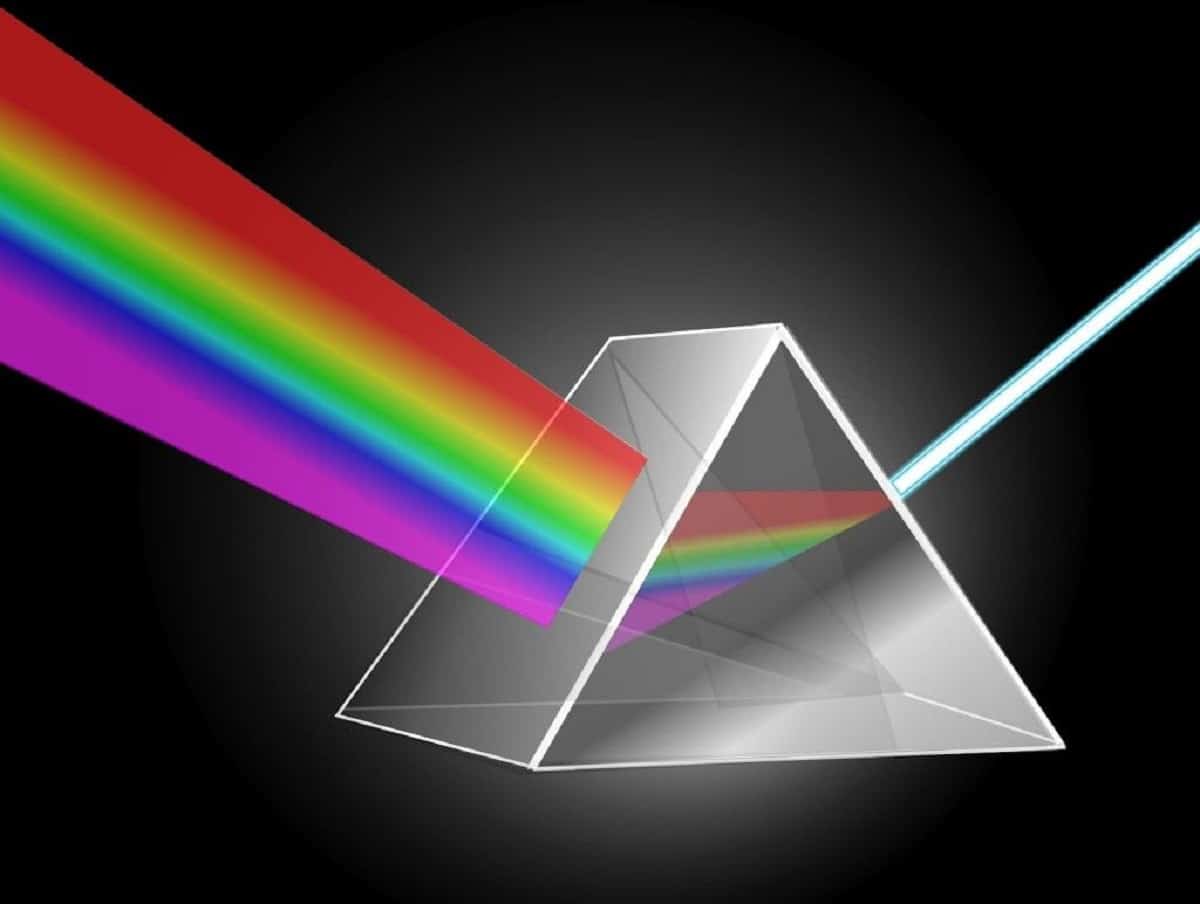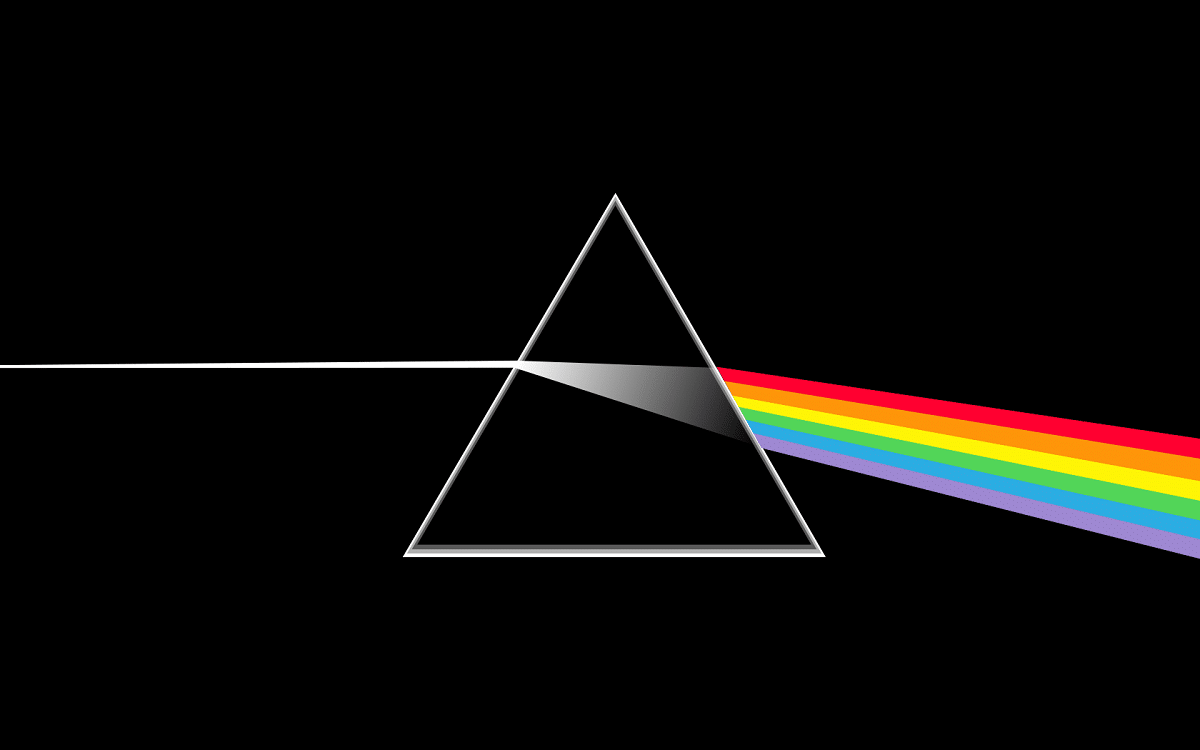
Newton was the first to understand what a rainbow is: he used a prism to refract white light and break it down into its basic colors: red, orange, yellow, green, blue, and violet. This is known as Newton's prism.
In this article we are going to tell you everything you need to know about Newton's prism, its characteristics and applications.
What is Newton's prism

Newton's prism is an optical instrument that allows us to explore and understand the nature of light. It was invented by the British scientist Isaac Newton in the XNUMXth century. who made important contributions in the field of optics.
The main ability of the Newton prism is to break white light into its component colors. When a ray of white light passes through the prism, the light is refracted, that is, it deviates from its original path due to the change in speed when passing through the middle of the prism. This causes light to split into different wavelengths, resulting in a spectrum of colors from red to violet.
This phenomenon is known as light scattering. Newton showed that the White light is made up of a mixture of different colors and that each of these colors has a different wavelength. Newton's prism allows us to visually appreciate this decomposition and shows us the diversity of colors that make up the light we see every day.
An interesting feature of the Newtonian prism is its ability to reverse the scattering process. By placing a second prism after the first, we can recombine the scattered colors and get white light again. This phenomenon is known as dispersion reversal and shows that white light is a mixture of all visible colors.
In addition to its use in the decomposition and recombination of light, Newton's prism has also been used in spectroscopy, a technique that allows the chemical composition of a substance to be analyzed by studying the light it absorbs or emits. By passing light through a sample and then through a prism, we can see dark or bright lines in the resulting spectrum, giving us information about the elements present in the sample.
Isaac Newton and some history

Isaac Newton is often one of the first great scientists that comes to mind when discussing eminent figures in history. His story of the apple and gravity have become quite well known. This physicist left a mark on history by developing the laws that regulate both the movement of celestial bodies in the Universe and that of physical objects on Earth. The Law of Universal Gravitation and the three Laws of Classical Mechanics are two examples of such laws.
Although his work on light and colors is not as well known, it is just as significant. Before Newton's research in 1665, it was commonly believed that colors were produced through certain reactions in glass and that sunlight was naturally white. However, he was the first to notice that white light was responsible for creating colors, as it fragmented in them due to its refractive attributes.
When performing a basic experiment using a refracting prism, He made the observation that light can be separated into various colors. Furthermore, he realized that opaque objects absorb certain colors while reflecting others, with the colors that are reflected being those that are visible to the human eye. This experiment was of such importance that it was published in the Journal of the Royal Society in 1672, marking the first published scientific paper in history.
Origin of colors

The philosopher Aristotle was the pioneer in the identification of colors. During the XNUMXth century BC, he deduced that all colors were created by the combination of four fundamental colors. These colors were associated with the four elements that they controlled the world, including earth, water, fire and sky. Aristotle also pointed out that the impact of light and shadow could influence these colors, making them darker or lighter and creating different variations.
Color theory did not advance until the XNUMXth century, when Leonardo Da Vinci made a variety of observations. This Italian man of many talents believed that color belonged specifically to matter. In addition, he expounded the initial scale of fundamental colors originally coined by Aristotle, a scale that led to the development of all other colors.
Da Vinci proposed that white be the primary color, affirming that it was the only color that allowed the reception of all the others. He associated yellow with earth, green with water, blue with sky, red with fire, and black with darkness. However, towards the end of his life, Da Vinci questioned his own theory by observing that a combination of other colors could create green.
Newton's prism and theory of light
In 1665, Newton made a life-changing discovery in his laboratory. By passing white light through a prism, he was able to split it into a spectrum of colors. This experiment revealed to him that white light contained all visible colors. The main element used in the experiment was a transparent prism. Newton confirmed that the rays produced by the prism were fundamental and could not be divided further. To verify his findings, he arranged two prisms in such a way as to allow the red rays from the first prism to meet as they passed through the second, again producing white light.
The occurrence of this phenomenon is similar to the refraction of light at the periphery of a piece of plastic or glass. This results in a variety of colors on the surface. This phenomenon can also be observed during sunny showers. The raindrops act like prisms, fragmenting the sunlight and producing a visible rainbow.
After your observation, Newton discovered that the refraction of light depended on the object in question.. As a result, specific opaque objects absorb certain colors instead of reflecting all of them. Subsequently, Newton realized that only the colors that are reflected are those that reach the eyes, thus contributing to the perception of color in the object.
Newton's explanation revealed that a surface that appears red is actually a surface that absorbs all colors of white light except red, which is reflected and then perceived by the human eye and interpreted by the brain as the color red.
I hope that with this information you can learn more about Newton's prism and its characteristics.